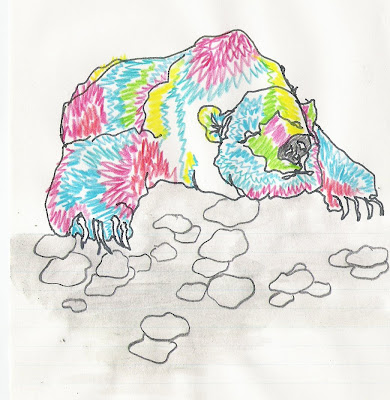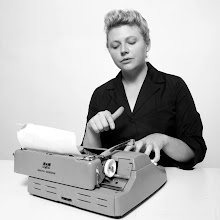Against the Grain
Los Angeles Contemporary Exhibitions
‘Against the Grain’, an exhibition organized by the artist Christopher Russell for Los Angeles Contemporary Exhibitions (LACE), has been marketed as a sequel to the ‘seminal’ LACE exhibition ‘Against Nature: A Group Show of Work by Homosexual Men’ (1988). Organized by Dennis Cooper and Richard Hawkins, the original exhibition was mounted in the midst of the AIDS crisis, on the one hand as a rebuttal to the socio-political rhetoric of the right, and on the other to emphasize the transgressive potential of personal expression and unfettered sensual indulgence at a time when the most visible leftist art tended towards disembodied polemical sloganeering, group activism and the imperative of social responsibility (‘Knowledge = Power’).
The titles of the two exhibitions reflect slightly different translations of the title of J.-K. Huysmans’ decadent feast, A rebours (1884), but the most significant and obvious distinction is Russell’s decision not to employ a clarifying subtitle for the recent show. While the oppositional social ambition of Cooper and Hawkins’ 1988 exhibition is obviously determined and delimited by its subtitle, what Russell’s show works ‘against’ is, by contrast, left undefined. For artists included in ‘Against Nature’ the conventions of the straight world was the quarry, and consequently much of the work embodied forms of decadent (some would claim irresponsible) social resistance enacted on a highly personal micro-scale.
Russell’s exhibition, by contrast, seems to take aim at complacency, particularly within the art world. Drawing on themes of violence, morbidity, decadence, abjection, deformation and the uncanny, this challenging show suggests that a small subset of artists today are expressing their distaste for the safe, commercial proclivities of the art world establishment by broadening the address of 1980s’ essentialist radicalism and turning those strategies against the logic of the market and the work it encourages.
It should come as no surprise, then, that one is unlikely to see much of the work in ‘Against the Grain’ in profitable commercial spaces. There are some obvious exceptions – Julian Hoeber, Anna Sew Hoy and Ryan Taber among them – but on the whole the work is messy, openly combative and often quite abject. Indeed, four photographs by Hoeber of a bronze portrait bust riddled with what might be bullet-holes or open sores, nestled in a sea of sequins, are both ravishingly beautiful and viscerally repellent, powerfully embodying an attraction to debasement and the unsafe that permeates this show.
Among the most unsettling works in the exhibition is an unevenly hung suite of quietly grotesque paintings by Ami Tallman, rendered in oil and watercolour. These modestly scaled works are like painting-by-numbers exercises dreamt up by a designer with a keen but subtle eye for the morbid and uncanny. The most arresting of these is a portrait of a man with dead eyes and a pale, lacerated face lying inert in a pastoral landscape, while in a nearby work a pack of crudely rendered orange wolves stare menacingly at the viewer.
The sense of a world in decline implied in Tallman’s work is made more disquieting and explicit in Robert Fontenot’s wall-bound sculpture Captains of Industry (2008). Fontenot’s work is a chaotic storyboard of deformed figures rendered in bread and wire that details various acts of cannibalism and dismemberment. Particularly troubling is the implication that this dark fairy tale describes the descent of a nuclear family into Lord of the Flies-like depravity. Brian Bress’ haunting Disaster Family (2007) depicts a family swaddled like post-apocalyptic outlaws in makeshift protective garb, their grey felt-like shrouds identified by the wall label as ‘disaster blankets’. Symmetrically arrayed for the viewer’s consumption like a cautionary natural history panorama, Bress’ sculpture speaks of a civilization’s improvised attempts to survive in the face of an unspecified threat. More oblique in its address, but no less sinister in affect, is Amy Sarkisian’s Godzilla (2008), a sculptural work composed of bat houses, vicious-looking spikes and lustrous black paint; fortress-like and menacing, it is as though this confrontational structure began life as a utilitarian object only to morph into the functionless decadence of Gothic ornament.
No other work embodies the ethics and aesthetics of menace and counter-commercial antagonism quite as plainly as John Knuth’s oddly scaled cardboard model of a decaying city Building (1983–2008), whose narrow streets lead the viewer to the exhibition’s most abject moment: Knuth’s installation Assault (2008), composed of just two elements, salt and a dead rat. As this unnerving work makes clear, the object of ‘Against the Grain’ is not to advance a particular social, political or personal agenda but rather to agitate the field of art production generally and, in the process, to reclaim the space of the gallery as an outlaw context where it is safe, and even encouraged, to be unsafe.
Christopher Bedford
http://www.frieze.com/issue/print_back/against_the_grain/
















